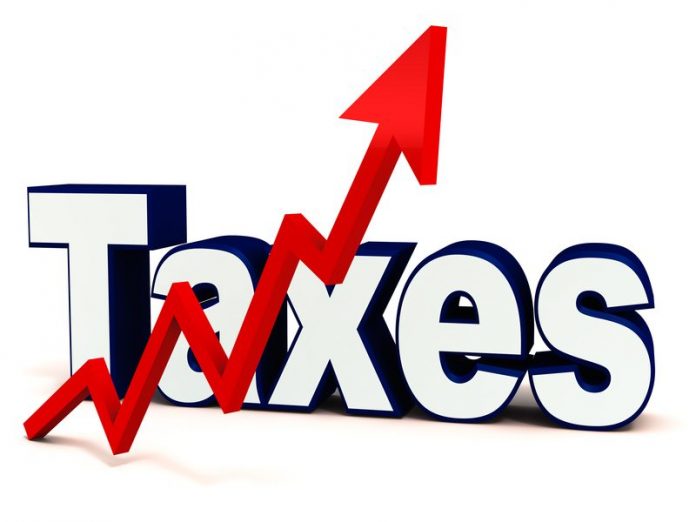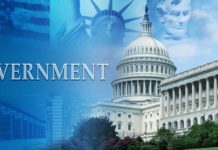Before the United States became a nation, the thirteen original states were still colonies of England, and taxation became a major sticking point.
In fairness to England, the primary purpose for raising taxes was to pay down debt incurred as a part of the French and Indian war (known as the ‘Seven Years War’ in Europe), and the bulk of the fighting had occurred where, as England viewed it, English blood had been shed to protect the American colonies. To England, it only made sense that the American colonies pay for that war.
The colonists had a different perspective, and particularly in Massachusetts.
Massachusetts paid for their part in the war as kind of a pay-as-you-go thing, footing the bill for the British Army in Massachusetts, as well as for the Massachusetts Provincials, over time, as the war was fought.
The Seven Years War was not fought in Massachusetts, and the British did not consider what Massachusetts had paid toward the war, to be in any way sufficient. The British accordingly raised taxes on Massachusetts, just as they did on the rest of the American colonies, and it is for this reason that the revolution started in Massachusetts, rather than some other colony – all of which were upset about British taxes.
It wasn’t just the increased taxes that the people of Massachusetts resented. Even more so, the people of Massachusetts resented the fact that the British Parliament was imposing taxes, when the people of Massachusetts (and the rest of the colonies) had no representation in that Parliament. People like Sam Adams argued that raising taxes on the colonies could flood England with colonial wealth, without the people in England (the only people who could vote) having to pay higher taxes themselves. In other words, the people of England had every incentive to tax as much money from the colonies as humanly possible – while the people in the colonies had no say in the matter.
“Representation without taxation” became a rallying cry for the American colonies, in their call for independence.
Flash forward about 235 years, and Mitt Romney noted that 47% of all Americans paid no federal income tax.
A few years later, Donald Trump reduced tax rates on the American people, and he did it across the board. It should not take a rocket scientist to note that lowering tax rates benefits those who pay taxes more than those who do not, but what is lost on a great many people is that lowering tax rates also reduces the number of people, as a percent of the population, who pay taxes.
Going back at least as far as Reagan, Republicans have generally wanted to lower tax rates on everyone, whereas Democrats have only wanted to raise taxes on ‘the rich’. Because of this, Republican tax cuts tend to reduce the percentage of people who pay income taxes, while Democratic tax hikes tend to be confined only to those the Republicans have not already excluded from taxation.
There is some dispute over how accurate Romney’s 47% number was, and it turns out that there are a number of ways to measure how many Americans pay income taxes. If we count all Americans, including children and retirees, then the percent of Americans who pay no taxes is much higher than 47%, and particularly if we include people in the country illegally. If we count households, we get a different number entirely. If we count households with at least one worker, we get a different number still, and if we only count workers, we get yet another number.
If we look only at those who work – and use individuals rather than households – we get 44.4% in 2018 (the most recent year for which such numbers are available), and that is the number I’m going to use for the math I’m about to do (all numbers coming from that link).
The number of American workers who paid income taxes in 2018 numbered (according to the IRS) 76.4 million people.
Our voter turnout in 2018 was 50%, with 113 million votes from 226 million eligible voters.
There were 226 million eligible voters, and only 76.4 million people paid federal income taxes. In other words, even if every single taxpayer was eligible to vote, 66% of all eligible voters paid no federal income tax.
Think, for just a moment, about the implications of voting to decide how much to tax 76.4 million people, when 66% of the people making that decision are not taxed at all.
It’s actually worse than that. We have tax ‘credits’ people can claim even if they pay no taxes, such as the Child Tax Credit, and the Earned Income Tax Credit – both of which were increased under the Trump tax cuts. Most of the people who pay no taxes receive at least one tax credit, meaning that they get money out of the tax system they never paid in.
Throw on top of that all of the things Democrats are promising to use taxes to pay for: free college, free healthcare, free housing (Bernie has promised to make housing a ‘human right’), etc., etc., etc..
The Democratic strategy is really very simple: the Democrats want to give more people more things, and want to tax fewer people to pay for it. What a great way to build a constituency!

There is an old joke that a democracy is two wolves and a sheep voting over what to have for dinner. The wolves, of course, vote to eat the sheep. Note that the proportion of wolves to sheep in this joke is the same as the number of eligible voters who pay no taxes to the number of people who do pay taxes. If you are a hard-working, tax paying American, you are food, and like it or not, but 66% of the voting public has every incentive to eat you.
If you are not one of the tax payers, you can vote to get whatever you want, without having to worry about the need to pay for it. Why shouldn’t you vote for Bernie? It’s not like he’s going to take your money. Free healthcare? Cool! Send the sheep the bill…
Trump wants to cut taxes again in his second term, which will mean that even fewer American workers will pay taxes, but ask yourself this: if Bernie Sanders can’t get elected with 66% of the voting public getting whatever it wants promised to it for free, how will Alexandria Ocasio-Cortez look when, say, 70% of the voting public can take whatever it wants from the other 30%? AOC will turn 35 in October of 2024, making her eligible to run in four more years… If a Democrat does not win in 2024, perhaps in 2028 75% of the public will vote to eat the other 25%.
Cutting tax rates is great when the economic growth the cuts lead to create an increase in tax revenues over the long term, but we have to create a system where more Americans share the tax burden, or we will also continue to grow the number of people incentivized to eat sheep. In spite of this, nobody, including Donald Trump, is talking about expanding the tax base. All ready, far too many people benefit from taxation, without sharing any of the tax burden, and no matter who wins the next election, that’s only going to get worse…
Our founding forefathers were wise enough to protect us from taxation without representation, but unfortunately they did not protect us from representation without taxation, and representation without taxation creates the exact same problem as taxation without representation – a voting public that pays no taxes has every incentive to increase the tax rates on those who do pay, and this incentive never goes away, no matter how high tax rates go.
Taxation without representation led to the creation of this country, and it will be representation without taxation that destroys it.


























FY 2019 $3.46 trillion (actual)
FY 2018 $3.33 trillion
FY 2017 $3.32 trillion
FY 2016 $3.27 trillion
An excellent point that gets little attention. I’ve heard several politicians refer to this issue whenever taxes are discussed but no one seems to want to do anything about it. The Democrats are focused solely on raising taxes for those who pay but it really should be about broadening the tax base so everyone who wants higher taxes has some skin in the game.